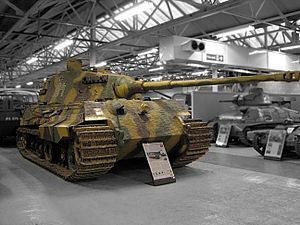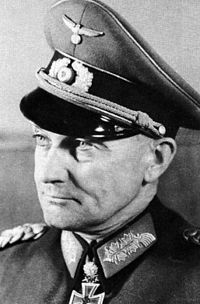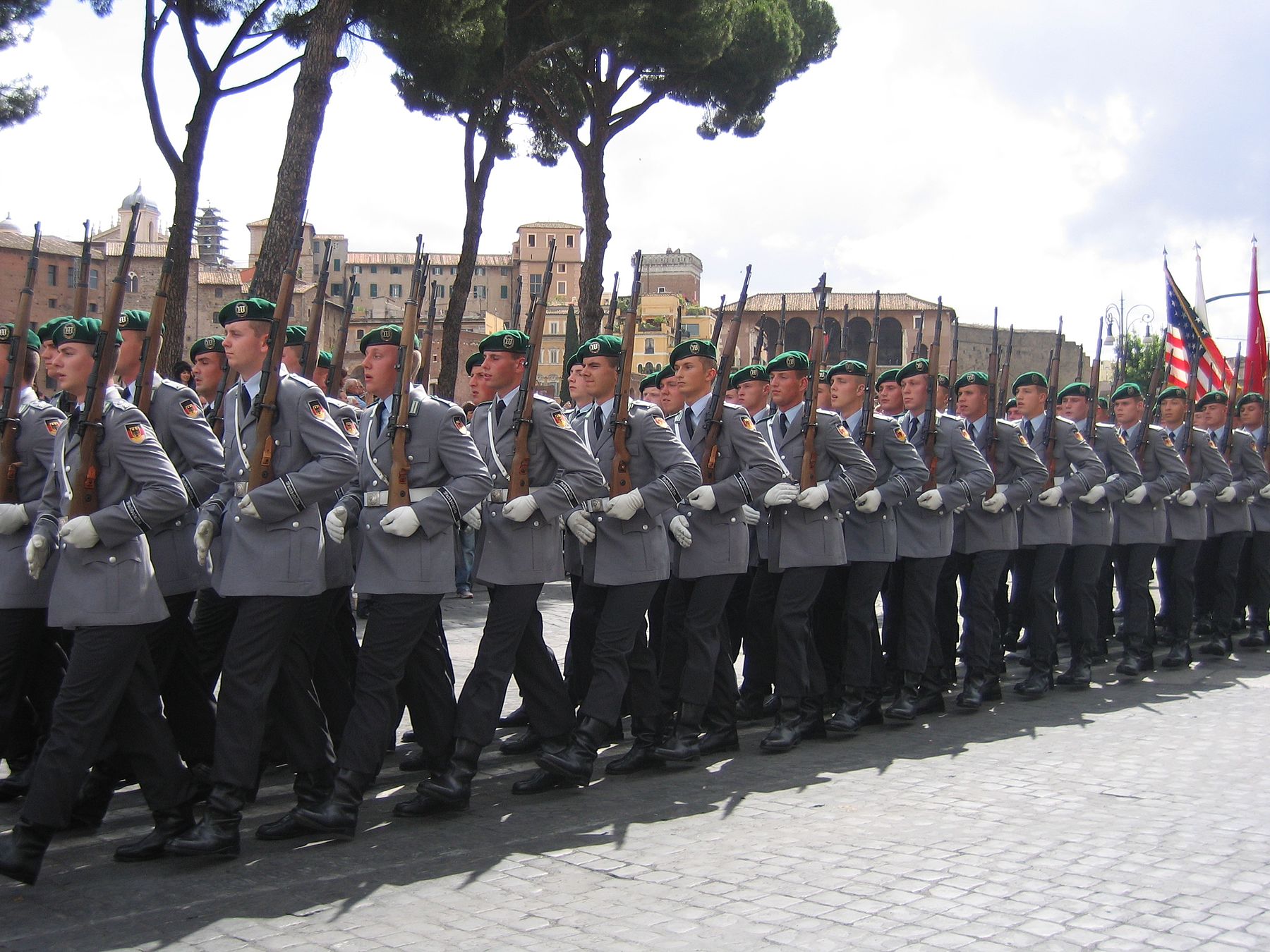
Tiger II at the Bovington Tank Museum
Tiger II is the common name of a German heavy tank of the Second World War. The final official German designation was Panzerkampfwagen Tiger Ausf. B, often shortened to Tiger B. The ordnance inventory designation was Sd.Kfz. 182. It is also known under the informal name Königstiger (the German name for the Bengal tiger), often translated literally as Royal Tiger, or somewhat incorrectly as King Tiger by Allied soldiers, especially by American forces.
The Tiger II was the successor to the Tiger I, combining the latter's thick armour with the armour sloping used on the Panther medium tank. The tank weighed almost 70 tonnes, and was protected by 100 to 185 mm (3.9 to 7.3 in) of armour to the front. It was armed with the long barrelled 8.8 cm KwK 43 L/71 anti-tank cannon. The chassis was also the basis for the Jagdtiger turretless tank destroyer.
The Tiger II was issued to heavy tank battalions of the Army and the Waffen-SS. It was first used in combat with 503rd Heavy Panzer Battalion during the Allied Invasion of Normandy on 11 July 1944; on the Eastern Front, the first unit to be outfitted with Tiger IIs was the 501st Heavy Panzer Battalion, which by 1 September 1944 listed 25 Tiger IIs operational.
Development of a heavy tank design had been initiated in 1937; the initial design contract was awarded to Henschel. Another design contract followed in 1939, and was given to Porsche. Both prototype series used the same turret design from Krupp; the main differences were in the hull, transmission, suspension and automotive features.
(Read more...)

Walter Model wearing his Knight's Cross with Oak Leaves and Swords, April 1943
Otto Moritz Walter Model (German pronunciation: [ˈmoːdəl]; 24 January 1891 – 21 April 1945) was a prominent German field marshal during World War II. He is noted for his defensive battles in the latter half of the war, mostly on the Eastern Front but also in the west. He has been called the Third Reich's best defensive tactical commander.
Although he was a hard-driving, aggressive panzer commander early in the war, Model became best known as a practitioner of defensive warfare. His success at the head of the 9th Army in the defensive battles of 1941–42 determined his future career path.
Model first came to Hitler's attention before World War II, but their relationship did not become especially close until 1942. His tenacious style of fighting and aggressive personality won him plaudits from Hitler, who considered him one of his best field commanders and repeatedly tasked him with retrieving desperate situations. However, their relationship had broken down by the end of the war after Model was defeated at the Battle of the Bulge. In April 1945, with the Third Reich's defeat imminent, Model committed suicide rather than be captured. (Read more)
 War and the military
War and the military Australia
Australia Greece
Greece United States (Army
United States (Army Navy
Navy Air Force
Air Force American Civil War
American Civil War Italian Wars
Italian Wars Napoleonic Wars
Napoleonic Wars World War I
World War I World War II …… Battleships
World War II …… Battleships Biological warfare
Biological warfare Terrorism
Terrorism












